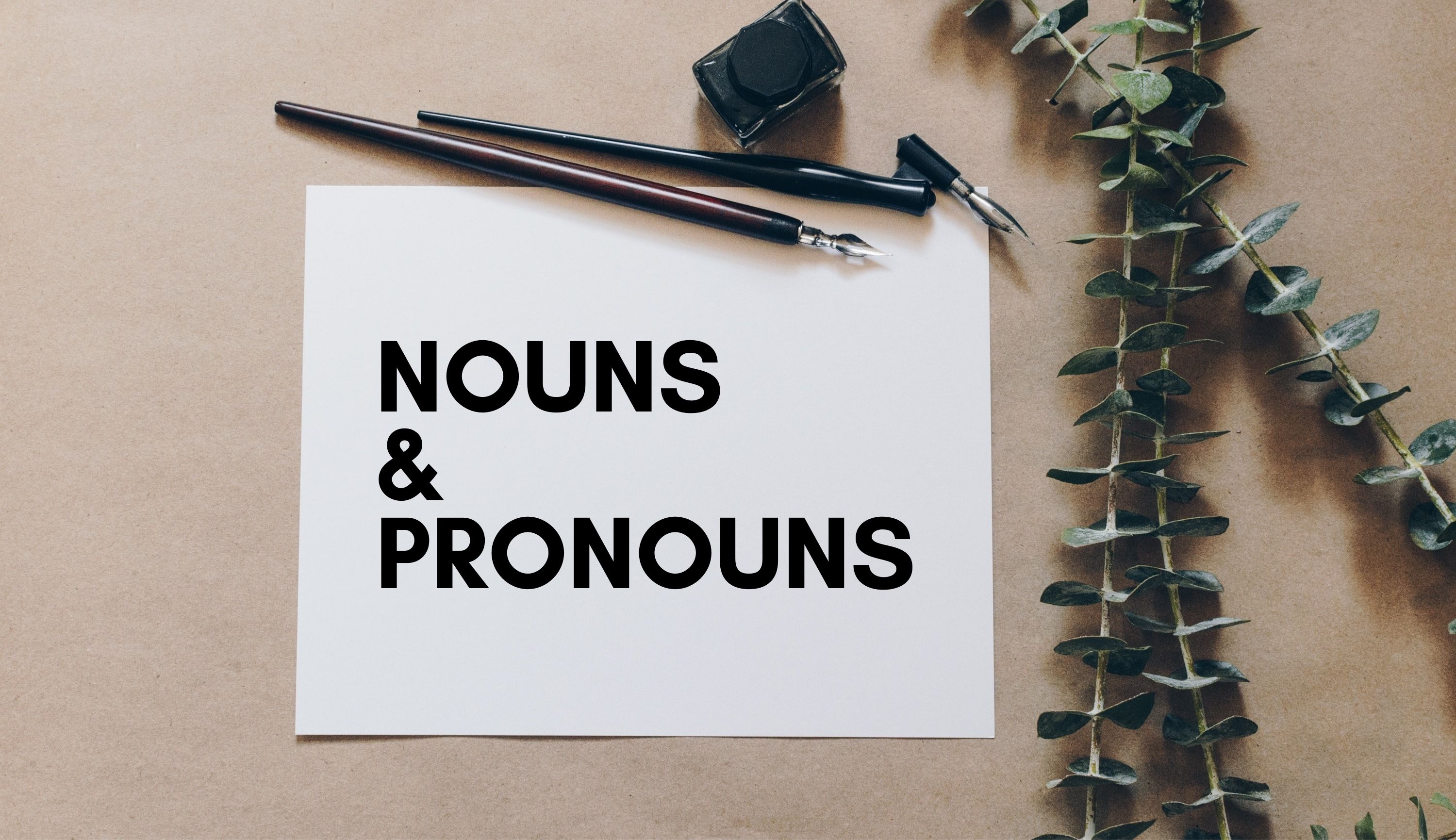Nouns and Pronouns
Noun, simply defined, is the name of a person, place or thing. Nouns can be of the following types:
1. Proper noun: A proper noun is the name of a specific person, place, or thing.
For example: Sherlock, John, Berlin, Pen
2. Common noun: A common noun is generally a non-specific name for a person, place or thing.
For example: Herd, Cat, Boy.
3. Collective noun: A collective noun is the name of a group of people, things or animals.
For example: team, audience, herd.
4. Abstract noun: An abstract noun is the name given to a feeling, quality, idea or experience.
For example: fear, kindness, information, work.
Nouns, can further categorized as: -
1. Countable nouns: - Nouns, that can be counted.
For example: One hundred men
2. Uncountable nouns: - Nouns, that cannot be counted.
For example: Water, Rice, Salt, Sugar
We make a lot of common errors while writing in terms of nouns, be it of capitalization, of singular or plural. Hence, following are some rules that one must keep in mind to avoid making such errors of nouns:
Some nouns are used only in the singular form.
For example: Geography, History, etc.
Some nouns are used only in their plural form.
For example: Spectacles
There are nouns which have singular and plural alike.
For example: sheep, deer
Abstract nouns are not used in the plural
For example: fear, kindness, charity
Proper nouns are always written with the first letter in capital.
For example: Pune, Mumbai
Collective noun, often takes a singular verb and has to be substituted by a singular pronoun.
For example: The team has given its decision.
Abstract nouns, do not take articles.
For example: Tea is a cash crop
Collective nouns, are gender neutral, even when denoting living beings
For example: Maya has a herd of sheep. She looks after them.
Non-living things are considered as of –
- Masculine gender: If the object gives a sense of strength or violence.
For example: sun, death
- Feminine gender: If the object gives a sense of beauty, gentleness, and gracefulness.
For example: Earth, India
Pronouns are used in a sentence, instead of a noun to avoid repetition.
For example: Harsh likes it when people look to him for leadership.
Here, the noun ‘Harsh’ is replaced by the pronoun, ‘him’, to avoid repetition in the sentence.
While writing in English Language and replacing a noun with a pronoun, we commonly make errors of using the wrong pronoun to substitute a noun or using a pronoun incorrectly. However, we can avoid making such errors if we study the types and usage of different categories of pronouns.
Pronouns fall into 6 broad categories:
Personal pronouns: Words such as he, she, his, her, they, etc., form personal pronouns. Such words can be used to frame a sentence either in first person, second person or third person view.
For example: We are going to play in the park. (first person perspective)
Mila can help you. (second person perspective)
They had come here. (third person perspective)
Possessive pronouns: These types of pronouns are used to show possession. The possessive pronouns are mine, yours, hers, etc.
For example: This is my pen.
Reflexive Pronoun: Such types of pronouns are used in sentences where the action of the subject affects itself. The reflexive pronouns are myself, yourself, herself, etc.
For example: The little girl enjoyed herself.
Relative Pronoun: Relative pronoun serves the purpose of joining two sentences. It shows the relation of a noun to the group of words that follow.
For example: This is Vandana. She works in a bank.
This is Vandana who works in a bank.
Indefinite pronouns: The pronouns – ‘neither, either, many, few, several, some, anyone, everyone, nobody, somebody, everybody, anything, nothing’ are the indefinite pronouns which do not specifically replace any noun.
For example: Anyone could have done this.
Demonstrative pronoun: Demonstrative pronouns are used to point out to an object. The demonstrative pronouns are this, these, that, those.
For example: Those are my jeans.
Interrogative pronouns: These pronouns are used to ask questions about a person or object.
Who, whom, whose, which – used for persons
What, which – used for things
While Nouns & Pronouns may be the first thing we learn about in English Grammar, we often do end up making mistakes regarding their usage. However, it is important to have a clear concept of them, to master the English language and its grammar


